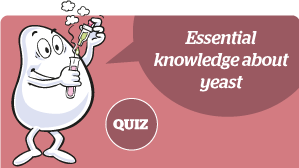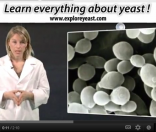Made with flour, water and salt, bread is now eaten all over the world. But to obtain light, well-risen bread with an airy crumb, another ingredient is indispensable: yeast!
Yeast is unquestionably one of the secrets behind good bread. Take a look at its surprising story!
For bread-making :
Firstly, yeast ferments sugars which it directly assimilates and are naturally present in flour (about 1.5% of its weight).
The second phase corresponds to the fermentation of a sugar found in flour called maltose. Maltose results from the action of certain enzymes, amylases, on flour starch and which is damaged when milling the wheat. When the dough contains added sugar, saccharose or glucose, this is directly fermented before maltose. In a product like brioche, saccharose is mainly consumed by yeast. The other unconsumed part helps to give a sweet taste to the product. The action of flour amylases is completed by that of another yeast enzyme, maltase, which then breaks down maltose to produce the simplest sugar form, glucose. Glucose (which gives volume to bread and the honeycomb shape of the crumb) and into alcohol (evaporated on baking). Yeast also produces aromatic compounds that contribute to the aroma and taste of bread .
The third phase occurs during baking. Fermentation and ends when the temperature reaches 50°C.
To enhance flavours : Food yeasts " are inactive yeasts used for their taste and their nutritive value . Thanks to their sapidity agents, aromatic notes and minerals, these yeasts are flavour enhancers. They are also used to improve the texture of low-fat products but also reduce acidity and bitterness . They have an impact on the aroma of the crumb via secondary fermentation products. Yeasts play a major role in colouring bread crust .
The development of yeast in bread dough
Yeast is a living organism that needs a favourable environment, food and water to develop. Here are a few explanations to understand better.
Yeast is a living organism that needs a favourable environment, food and water to develop.
Its food :
Water :
The environment :
 Bread, and the "baguette" or stick in particular, is considered to be the ultimate traditional French food.
Bread, and the "baguette" or stick in particular, is considered to be the ultimate traditional French food.


.jpg)



